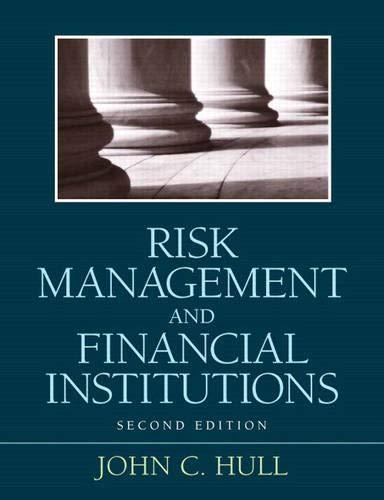Question
QUESTION ONE Read the case study below and answer all questions that follow. Love it or hate it, IKEA is the most successful furniture retailer
QUESTION ONE
Read the case study below and answer all questions that follow. Love it or hate it, IKEA is the most successful furniture retailer ever. With 276 stores in 36 countries, they have managed to develop their own special way of selling furniture. Their stores layout means customers often spend two hours in a store far longer than in rival furniture retailers. IKEAs philosophy goes back to the original business, started in the 1950s in Sweden by Ingwar Kamprad. He built a showroom on the outskirts of Stockholm where land was cheap and simply displayed suppliers furniture as it would be in a domestic setting. Increasing sales soon allowed IKEA to start ordering its own self-designed products from local manufacturers. But it was innovation in its operations that dramatically reduced its selling costs. These included the idea of selling furniture as self-assembly flat packs, which reduced production and transport costs, and its showroom-warehouse concept, which required customers to pick the furniture up themselves from the warehouse (which reduced retailing costs). Both of these operating principles are still the basis of IKEAs retail operations process today. Stores are designed to facilitate the smooth flow of customers, from parking, moving through the store itself, to ordering and picking up goods. At the entrance to each store large notice boards provide advice to shoppers. For young children , there is a supervised play area for a time. Parents are recalled via the loudspeaker system if the child has any problems. IKEA allow customers to make up their minds in their own time but information point have staff who can help. All furniture carries a ticket with code number which indicates its location in the warehouse. (For larger items customers go to the information desks for assistance.) There is also an area where smaller items are displayed, and can be picked directly. Customers then pay at the checkouts, where a ramped conveyor belt moves purchases to the checkout staff. The exit area has service points, and a loading area that allows customers to bring their cars from the car park and load their purchases. Behind the public face of IKEAs huge stores is a complex worldwide network of suppliers. 1 300 direct suppliers, about 10 000 sub-suppliers, and wholesale and transport operations, including 26 distribution centres. This supply network is vitally important to IKEA. From purchasing raw materials, right through to finished products arriving in its customers homes, IKEA relies on close partnership with its suppliers to achieve both ongoing supply efficiency and new product development . However, IKEA closely controls all supply and development activities from IKEAs hometown of lmhult in Sweden. But success brings its own problems and some customers became increasingly frustrated with overcrowding and long waiting times. In response IKEA launched a programme designing out the bottlenecks. The changes included: MODULE OPERATION MANAGEMENT IN SUPPLY CHAIN MANAGEMENT TOTAL MARKS 60 MARKS 1 clearly marked in-store short cuts allowing those customers who just want to visit one area to avoid having to go through all the preceding areas; express checkout tills for customers with a bag only rather than a trolley; extra help staff at key points to help customers; redesign of the car parks, making it easier to navigate; dropping the ban on taking trolleys out to the car parks for laoding (originallly implemented to stop vehicles being damaged); a new warehouse system to stop popular product lines running out during the day; more childrens play area. IKEA spokewoman Nicki Craddock said: We know people love our products but hate our shopping experience. We are being told that by customers every day, so we cant afford not to make changes. We realised a lot of people taook offence at being herded like sheep on a long route around stores. Now if you know what you are looking for and just want to get in, grab it and get out, you can. REQUIRED: Using appropriate academic sources and supporting evidence from the case study above:
1.2 Suppose that IKEA is considering locating a new IKEA facility in South Africa and that the company is considering three possible locations Johannesburg, Cape Town, and Durban for the location of the facility. The company has obtained the following data for the three locations: Location Johannesburg Cape Town Durban Total fixed costs R600 000 R1 200 000 R2 200 000 Direct material cost per unit R400 R200 R130 Direct labour cost per unit R150 R120 R100 Variable overhead per unit R200 R180 R120 The company wishes to find the most economical location for an expected volume of 5 000 units of a furniture set per year. Assume that the expected average selling price for a unit of the furniture set is R2 500.
REQUIRED: 1.2.1 Discuss the three steps involved in locational break-even analysis. (2 marks)
1.2.2 On the basis of the data on the three locations provided above, use a locational cost-volume analysis to determine the most suitable location for the IKEA facility in South Africa. As part of the analysis, plot the cost curve for each of the three location on the same graph, determine the total cost for each location, and the expected profit for each location. For the plots, use volume from 0 to 7400 at intervals of 200.
Step by Step Solution
There are 3 Steps involved in it
Step: 1

Get Instant Access to Expert-Tailored Solutions
See step-by-step solutions with expert insights and AI powered tools for academic success
Step: 2

Step: 3

Ace Your Homework with AI
Get the answers you need in no time with our AI-driven, step-by-step assistance
Get Started


